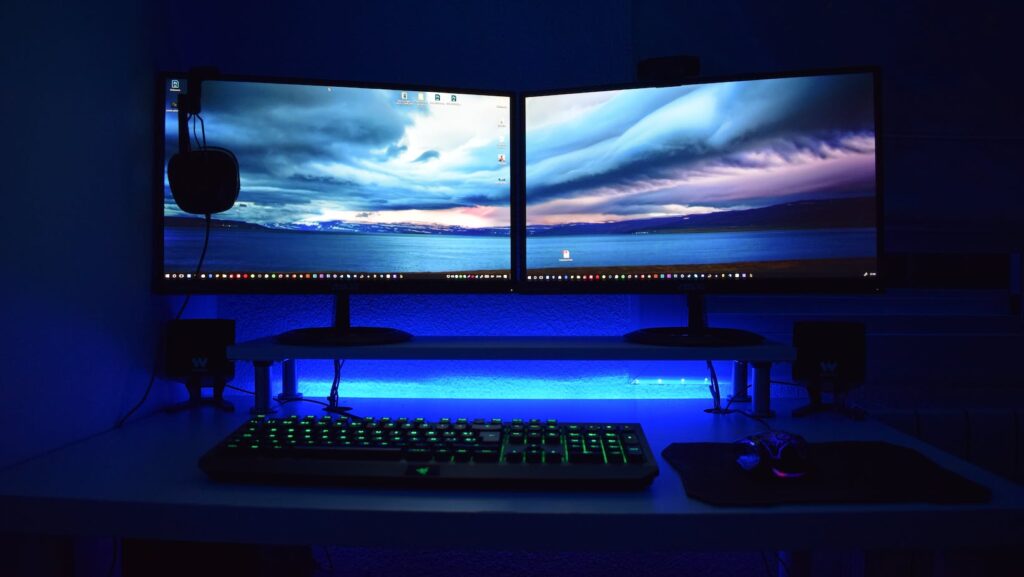There has been significant strides in screen technologies, and new technologies have emerged since the days of Cathode Ray Tube (CRT). Among the most recent technologies include OLED and IPS; knowing how these technologies compare can help you have a clear winner between them.
Bulky computers are pretty much obsolete nowadays, paving the way for thinner, lightweight devices with high-definition monitors. IPS and OLED are concepts that will come up when examining monitors as they should, considering they dominate today’s market.
You must consider certain aspects when selecting between these types of panels, and this post has you covered, so keep reading.
OLED vs. IPS (Quick Comparison)
Traditionally, OLED (Organic Light Emitting Diode) displays generate true blacks, have fast response times, and don’t rely on backlight to produce images. On the other hand, IPS (In-Plane Switching) panels depend on backlight to produce images and have lower contrast and slower response times. Traditionally, OLEDs were found on high-end devices, and only high-end laptops and TVs have OLED displays even today. Still, they are common in smartphones, even mid-range ones. In contrast, IPS monitors, an LCD panel type, are in computers, wearable devices, and televisions.
Which Panel Should You Choose Between OLED and IPS?
Here’s a detailed comparison between OLED and IPS panels to help you settle down for a display panel that will suit you best.
1. Size
IPS panels are available in different sizes, large and small, ranging between 20 inches to 100 inches, so you have plenty of options. On the other hand, OLED displays come in 65 or 55 inches, so you must ensure the room you want to put your device in is big enough. With television sizes increasing consistently, OLED displays will only get bigger.
2. Response Times
Response time is exceptionally important if you plan to use your television or laptop for gaming because that will allow you to react to images swiftly. OLED has a faster response time compared to IPS. Pixels take below one millisecond to change colors in OLED displays and about 15 ms or 4 ms when using overdrive.
3. Resolution
Everyone wants a high-resolution display; fortunately, IPS and OLED panels offer high resolution, 4K UHD resolution. Therefore, you wouldn’t go wrong with either panel when it comes to resolution. However, remember not every LCD panel display has 4K UHD resolution, so inquire from the manufacturer before buying.
4. Contrast
Since the pixels in OLED can be wholly white or black, the panel offers infinite contrast ratios, so images on OLED screens have a higher quality than IPS screens. However, the IPS panel’s contrast ratio isn’t bad; in fact, it is much better than TN LCD panels.
5. Viewing Angles
Understanding the viewing angles is essential if you have a large room and plan to use the screen to watch movies with your friends and family. This will ensure everyone can see the movie without struggling or being forced to sit in front of the television.
OLED panels are superior to IPS panels regarding viewing angles. However, you will also have superb image quality from an IPS screen, whether sitting in front or on the side of the viewing device, because IPS offers a 178° viewing angle.

6. Power Consumption
OLED has the upper hand when it comes to power consumption since every diode produces its color and light inside the panel, and the colors are clear because there are no backlights. On the other hand, IPS panels consume more power because they require backlighting. Remember, backlighting draws power repeatedly from the source of energy.
It’s worth noting that light comes from OLED panels without producing excess heat.
7. Lifetime
IPS panels are more durable and have a longer lifetime than OLED panels which are more susceptible to damage. OLED panels’ organic diodes are vulnerable to humidity exposure and water damage (you cannot repair a diode exposed to water).
You also have to worry about dead pixels and bad color reproduction with OLED panels since blue diodes degrade faster than green and red diodes.
8. Flexibility
OLED panels are more flexible and thinner than IPS panels with organic plastic 100- 500 nanometers thin hence devices with OLED panels can be thinner. On the other hand, IPS panels have more complex layers, thus thicker than OLEDs, and their rigid crystalline structure does not make them flexible.
9. Price
OLED panels are slowly getting more affordable but still cost considerably more than IPS panels. You can buy an IPS panel at various prices, with both expensive and cheap ones available. IPS panels are also much cheaper since they come in various sizes.
Final Remarks
OLED is superior to an IPS panel, especially if you prioritize resolution, viewing angle, and contrast ratio and have a sizeable budget. However, if you want more size options or a more affordable display panel, then an IPS panel is the way to go.

